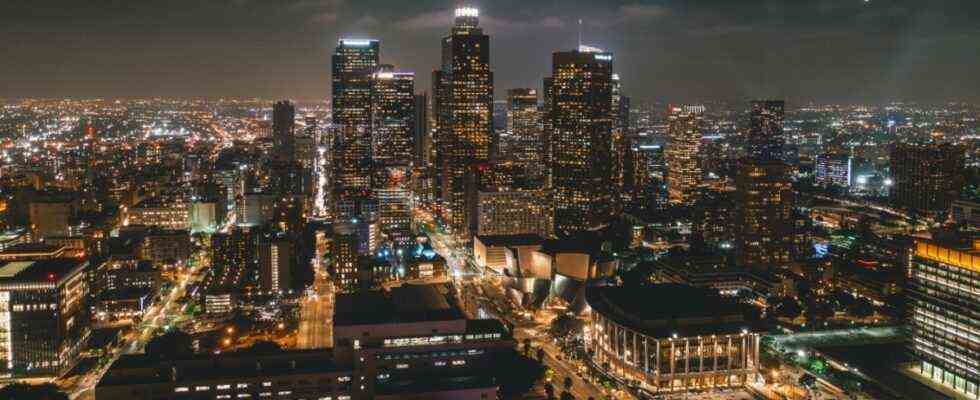American cinema is headquartered in Los Angeles. The film shapes the city: about the many residents who work for this industry or would like to work, and about the cinematic works themselves that are set in this city, tell of it and are often seen as a reflection of urban reality – “Jackie Brown “by Quentin Tarantino,” The Big Lebowski “by Ethan and Joel Coen and” Boogie Nights “by Paul Thomas Anderson are among them. Some have the topography or the name of the city itself in the title: “Sunset Boulevard”, “Mulholland Drive”, “Beverly Hills Cop”, “LA Crash”, “LA Confidential” …
The author and translator Sebastian Raho breaks up this cinematic perspective on the city in the anthology “Los Angeles” which he edited. In it he gathers literary texts that describe this city, despair of it, rub against each other or throw themselves at it. He by no means has to search laboriously in the outskirts of American literature. Los Angeles has been the scene and topos of literature for as long as the city has existed. The first hundred years of its existence – from 1781 to the 1880s – were relatively insignificant. For decades it was a small settlement under first Spanish and then Mexican rule. It wasn’t until the second half of the 19th century, when California became a US state, that the population skyrocketed.
There is a beautiful text in the book by DJ Waldie, in which the author describes how the governor of California at the time, Felipe de Neve, had already devised a street grid for the future city when he founded Los Angeles in 1781 was, however, later city planners served as a basis, but rotated by 45 degrees and thus strictly aligned with the compass. If you will, there was already something dreamlike, imagined, fantastic over the city at the very moment it was founded; Los Angeles was already a projection from the start.
The attractiveness of the city, its nimbus as a place of longing, consisted primarily in the fact that it is located in a fertile land that could only be reached by means of a journey full of privation. It lies on the other side of a desert and a mountain range, it was only the construction of the railroad and the Panama Canal that made it accessible to the masses. Charles F. Lummis describes in his text “On foot through the continent”, which Raho quotes in excerpts, as he marched to the city and the Pacific.
A few decades later, people drive to Los Angeles in their own cars or, if necessary, take the bus, like the first-person narrator in Jack Kerouac’s “On the Road”. It is a brilliant text about the darker side of Los Angeles, about plans that don’t work out and hopes that are not dashed as a result. A text about love, despair and loneliness that can afflict you even in a city with more than three million inhabitants.
Created as heaven, the city can also be hell
Interrupted only by a “Hollywood diary”, first published in 1938 new Yorker published, in which Daniel Fuchs describes his absurd everyday life as an author in the service of a film studio, follow on from Bertolt Brecht’s “Hollywood elegies” on “On the Road”: also a text about illusions and promises as well as the craziness of a city that makes its money earned with imagination. Hollywood, according to Brecht, is divine efficiency because one establishment is enough: Created as heaven, the city is at the same time hell for the poor and unsuccessful.
Many of Thomas Pynchon’s texts also lead to hell. In the excerpt that Sebastian Raho selected from Pynchon’s novel “Natural Defects”, however, it goes to the beach to surf. It is a rich, also winding text, multi-layered and ambiguous, as you know from this author. With a huge portion of “hippie metaphysics”, as Pynchon calls it, so also a cheerful, fun-loving dimension. That too is Los Angeles in this volume.
Sebastian Raho (Ed.): Los Angeles. Wieser Verlag, Klagenfurt 2021. 222 pages, 14.95 euros.

